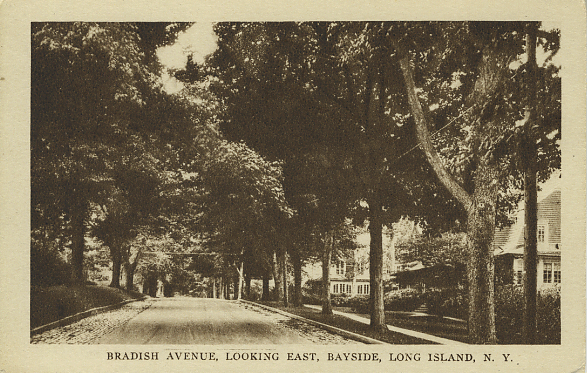Vintage Postcards of Bayside, New York
Bradish Avenue
Bradish Avenue was named for George Bradish, Jr., a gentleman from a wealthy and socially connected New York family. His father was a sugar speculator who died when Bradish was a young boy. As he was an only child it is purported that Bradish received the entirety of his father's estate: an estimated two to three million dollars when he came of age. From all accounts, Bradish was an exceedingly poor businessman and relied on his father's inheritance to support him throughout his life. Bradish married Elizabeth J. Johnston in 1851 and soon after purchased a large amount of property in College Point. A few years later Bradish sold the property and relocated to Bayside. During the Civil War, Bradish volunteered at the fort at Willet's Point, during that era called Camp Morgan, in honor of the then current New York State Governor Edwin D. Morgan. Bradish assisted in the care of wounded soldiers at the Transit Hospital located on the fort.
His Bayside estate originally extended from 210th Street to Little Neck Bay and from 30th Avenue to 28th Avenue. Before Bayside's streets were changed to a numerical system, 29th Avenue was known as Bradish Avenue. There were stone entrance gateposts to his estate installed on 29th Avenue and 210th Street that had remained in place until recently. The location of Bradish's home on his estate is now the site of St. Mary's Hospital for Children.
The homes along Bradish Avenue seen in this post card were part of the development known as Bay Side Park. With the advent of the Long Island Railroad establishing electrical power, The North Shore Realty Company sub-divided the Bradish Estate at the turn of the last century anticipating a housing boon that catered to an upper middle class clientele.

